How to Drive Free Traffic to Your E-commerce Store

In today’s competitive digital landscape, generating free traffic to your e-commerce store is crucial for success. While paid advertising can be effective, organic traffic ensures sustainable growth without constantly increasing marketing expenses. Below, we unveil innovative and actionable strategies to help you attract visitors to your online store without spending a dime. 1. Leverage the Power of SEO Search Engine Optimization (SEO) is the backbone of free organic traffic. By optimizing your website for search engines, you increase visibility and attract users actively searching for your products. Optimize Product Pages Improve Website Speed & Mobile-Friendliness Target Low-Competition Keywords 2. Create High-Quality Blog Content A well-maintained blog can drive consistent traffic and establish authority in your niche. Types of Content That Work Best Content Promotion Strategies 3. Utilize Social Media for Viral Reach Social media platforms are goldmines for free traffic when leveraged correctly. Facebook & Instagram Pinterest & Twitter 4. Harness the Power of Email Marketing Email marketing remains a highly effective method for driving recurring traffic. Build an Engaging Email List Send Targeted Email Campaigns 5. Get Free Traffic from Online Communities Engaging with online communities positions your brand as an industry expert. Quora & Reddit Niche Forums & Facebook Groups 6. Collaborate with Influencers & Bloggers Micro-Influencer Partnerships Guest Blogging for Backlinks 7. Take Advantage of User-Generated Content (UGC) User-generated content boosts trust and drives free traffic through word-of-mouth marketing. Encourage Customer Reviews & Testimonials Create a Branded Hashtag Campaign 8. Optimize for Local & Voice Search Google My Business for Local Traffic Voice Search Optimization Final Thoughts Driving free traffic to your e-commerce store requires strategic execution across multiple channels. By leveraging SEO, content marketing, social media, email marketing, and community engagement, you can attract a steady stream of organic visitors without spending on ads. Implement these strategies consistently, and watch your store grow!
The Rise of Nano and Micro-Influencers: A Game-Changer in Digital Marketing
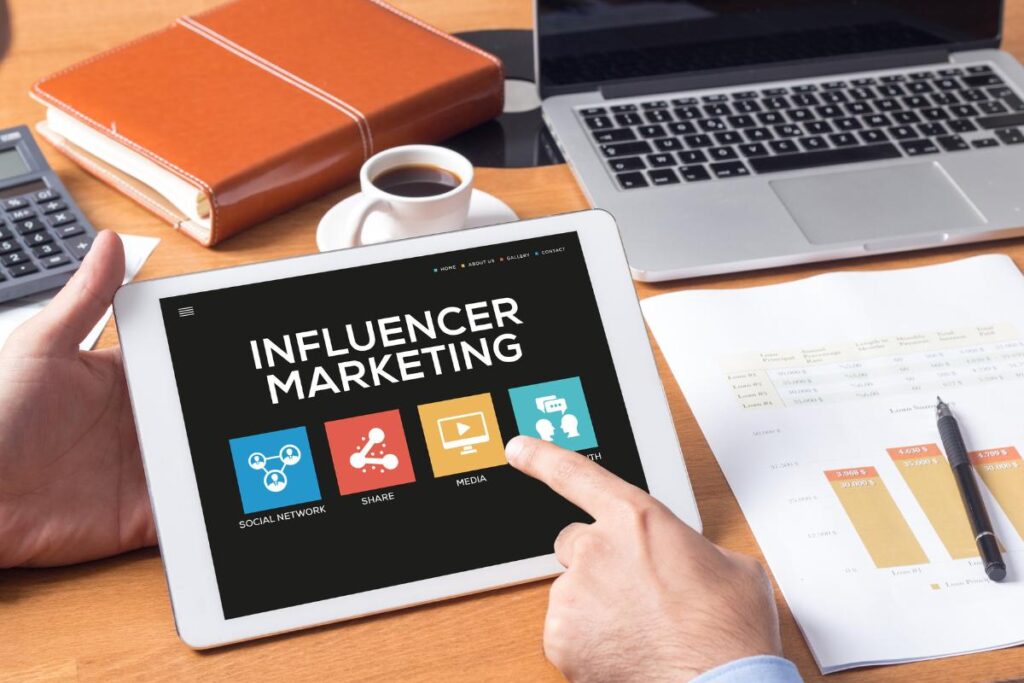
Why Nano and Micro-Influencers Are Transforming the Industry The world of influencer marketing is evolving rapidly. While mega-influencers and celebrities once dominated the space, brands are now shifting their focus to nano and micro-influencers—individuals with smaller but highly engaged audiences. This shift is driven by their authenticity, credibility, and higher engagement rates, which ultimately lead to better marketing results. Who Are Nano and Micro-Influencers? Before diving into the benefits of working with these influencers, let’s define them: Despite their smaller follower count, these influencers have strong connections with their audience, fostering trust and credibility that larger influencers often lack. Why Brands Prefer Nano and Micro-Influencers 1. Higher Engagement Rates Nano and micro-influencers enjoy significantly higher engagement rates compared to macro-influencers and celebrities. According to studies, nano-influencers can achieve an engagement rate of up to 8%, while larger influencers struggle to maintain even 2%. 2. Increased Authenticity and Trust Unlike celebrity endorsements that often feel forced, nano and micro-influencers provide genuine recommendations. Their followers trust them more because they engage in authentic, relatable conversations. 3. Cost-Effective Marketing Strategy Hiring a celebrity or macro-influencer can cost thousands of dollars per post. In contrast, working with nano and micro-influencers is much more affordable, allowing brands to maximize their ROI by collaborating with multiple influencers within the same budget. 4. Niche-Specific Targeting Nano and micro-influencers often specialize in niche markets, making them ideal for brands that want to reach a highly targeted audience. Whether it’s beauty, fitness, travel, or tech, these influencers speak directly to engaged consumers who are interested in their niche. 5. Better Conversion Rates Since their audience sees them as peers rather than celebrities, their recommendations feel more like word-of-mouth referrals. As a result, their followers are more likely to trust their opinions and take action—leading to higher conversion rates. How Brands Can Collaborate with Nano and Micro-Influencers 1. Product Gifting One of the most effective ways to work with nano and micro-influencers is through product gifting. Brands send their products in exchange for honest reviews, which can generate organic buzz and brand awareness. 2. Affiliate Marketing Programs Brands can create affiliate programs where influencers earn a commission for every sale they drive. This method not only incentivizes influencers but also ensures a measurable return on investment. 3. Sponsored Content Many brands pay influencers to create sponsored posts, videos, or stories promoting their products. These collaborations must maintain authenticity to ensure that the content feels natural and engaging. 4. Brand Ambassador Programs Establishing long-term partnerships with influencers can be more beneficial than one-off campaigns. By making influencers brand ambassadors, businesses can build stronger relationships and maintain consistent brand representation. 5. Social Media Takeovers Brands can allow influencers to take over their social media accounts for a day, offering a fresh perspective and attracting new audiences. Case Studies: Success Stories with Nano and Micro-Influencers Glossier: A Nano-Influencer Success Story The beauty brand Glossier became a powerhouse in the industry by leveraging nano and micro-influencers. Instead of spending money on celebrity endorsements, Glossier focused on everyday consumers who genuinely loved their products. The result? A cult-like following and exponential brand growth. Daniel Wellington: A Micro-Influencer Masterclass Watch brand Daniel Wellington built its empire by collaborating with micro-influencers worldwide. Their strategy of gifting watches in exchange for social media posts helped them achieve massive brand visibility and millions in revenue. The Future of Nano and Micro-Influencers in Digital Marketing As consumer trust in traditional advertising declines, the demand for authentic marketing strategies will continue to rise. Nano and micro-influencers will play a pivotal role in shaping the future of digital marketing by offering brands a cost-effective, high-engagement alternative to traditional influencer partnerships. Final Thoughts Nano and micro-influencers are no longer just an emerging trend—they are the future of influencer marketing. Their ability to foster genuine relationships, drive high engagement, and create cost-effective marketing solutions makes them an invaluable asset for brands looking to expand their digital presence. By integrating nano and micro-influencer collaborations into your marketing strategy, you can build trust, engagement, and conversions—leading to long-term business success.
Best E-commerce Platforms for Selling Online

In today’s digital landscape, choosing the right e-commerce platform is crucial for the success of your online business. Whether you’re a small business owner, an entrepreneur, or an established retailer, selecting the best platform can significantly impact your sales, user experience, and overall growth. With countless options available, we’ve compiled a list of the best e-commerce platforms to help you make an informed decision. 1. Shopify ? The Ultimate All-in-One Solution Shopify is one of the most popular and user-friendly e-commerce platforms, offering a seamless experience for businesses of all sizes. Key Features: Best For: Small to medium-sized businesses looking for a hassle-free setup and powerful features. 2. WooCommerce ? The Best WordPress Plugin for E-commerce WooCommerce is a powerful, flexible, and free WordPress plugin that transforms any website into a fully functional online store. Key Features: Best For: Businesses already using WordPress or those needing a highly customizable solution. 3. BigCommerce ? Best for Scaling Businesses BigCommerce is known for its enterprise-level capabilities while being easy enough for small businesses. Key Features: Best For: Businesses looking to scale quickly with enterprise-level features at an affordable cost. 4. Wix eCommerce ? Best for Beginners Wix eCommerce is a great choice for beginners who need an easy, affordable, and visually appealing online store. Key Features: Best For: Small business owners and entrepreneurs who want a simple and beautiful online store without coding experience. 5. Magento (Adobe Commerce) ? Best for Large Enterprises Magento (now known as Adobe Commerce) is the most powerful, flexible, and scalable e-commerce platform available today. Key Features: Best For: Large businesses and enterprises that require a highly scalable and customizable e-commerce platform. 6. Squarespace ? Best for Creative Entrepreneurs Squarespace is an excellent option for creatives and small business owners looking for visually stunning online stores. Key Features: Best For: Artists, designers, and creative businesses looking for an aesthetically pleasing online store. 7. PrestaShop ? Best Free Open-Source Solution PrestaShop is a free, open-source platform ideal for tech-savvy business owners. Key Features: Best For: Businesses looking for a free, flexible, and self-hosted e-commerce solution. How to Choose the Best E-commerce Platform? Factors to Consider: Conclusion: Which Best E-commerce Platform is Right for You? Each Best E-commerce platform has its unique strengths, and the best choice depends on your specific business needs. Whether you prioritize ease of use, customization, scalability, or affordability, there is a perfect platform for you. If you’re a beginner, Shopify or Wix is ideal. If you need a powerful, scalable solution, Ma
Augmented Reality (AR) in Marketing: The Future of Customer Engagement

Augmented Reality (AR) is revolutionizing the marketing landscape, offering brands an unprecedented way to engage with their customers. From immersive shopping experiences to interactive advertising, AR is reshaping how consumers perceive and interact with products and services. This cutting-edge technology blends digital elements with real-world environments, creating a unique and engaging user experience. In this article, we explore how AR is transforming marketing, its benefits, successful case studies, and how businesses can leverage this technology to stay ahead in the competitive digital marketplace. The Power of Augmented Reality in Marketing The rapid advancement of AR technology has enabled marketers to provide immersive and interactive brand experiences like never before. Unlike traditional marketing methods, AR allows consumers to engage with products virtually, bridging the gap between the physical and digital worlds. Key areas where AR is making a significant impact in marketing include: Immersive Shopping Experiences: Try Before You Buy One of the most exciting applications of AR in marketing is virtual try-ons. Brands across various industries, from fashion to furniture, are using AR to allow customers to visualize products in real-world settings before making a purchase. Fashion and Beauty Industry Furniture and Home Decor Interactive Advertising: Engaging Consumers Like Never Before AR advertising transforms passive viewers into active participants, making marketing campaigns more engaging and memorable. Brands are leveraging AR-powered ads to create unique, interactive experiences that captivate consumers. AR Filters and Lenses on Social Media Gamification in Marketing AR-Powered Product Visualization: Boosting Sales and Reducing Returns Product visualization through AR significantly enhances the customer decision-making process. Customers can see how a product fits their needs without physically interacting with it, reducing hesitation and increasing conversion rates. E-commerce and Retail Automotive Industry Enhancing Customer Engagement and Brand Recall AR marketing creates memorable and engaging experiences, improving brand recall and customer retention. Businesses that adopt AR stand out from competitors and build stronger connections with their audience. Interactive Storytelling Live Events and Experiential Marketing The Future of AR in Marketing As 5G technology and AI-driven AR solutions continue to evolve, the potential for AR in marketing is limitless. Here?s what the future holds: Conclusion: Why Businesses Should Invest in AR Marketing Augmented Reality is no longer a futuristic concept?it is a powerful marketing tool that is transforming the way brands interact with consumers. Businesses that leverage AR will gain a competitive edge by offering immersive shopping experiences, interactive advertisements, and engaging customer interactions. Adopting AR in marketing not only enhances brand engagement and customer satisfaction but also boosts sales and reduces product return rates. As technology advances, AR will become an indispensable component of digital marketing strategies.
Use High CPC Niches – Digital Marketing is a High-Paying Niche. More US Visitors = More Earnings!
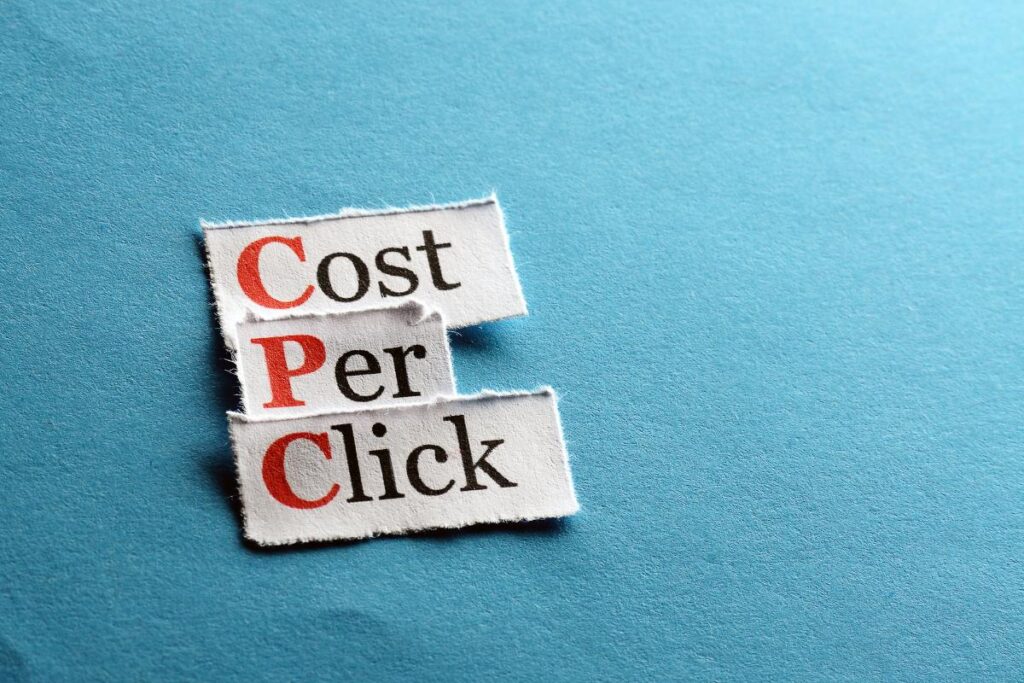
In the ever-evolving world of digital marketing, maximizing Google AdSense earnings is a top priority for content creators and marketers. One of the most effective strategies to achieve higher revenue is by targeting high CPC (Cost Per Click) niches and attracting more US visitors. The USA market offers some of the highest CPC rates, making it a lucrative avenue for publishers and advertisers alike. What is CPC and Why Does It Matter? CPC (Cost Per Click) refers to the amount advertisers are willing to pay for each click on their ads. A higher CPC means more revenue per click, directly impacting AdSense earnings. Different industries have varying CPC rates, with some niches offering exceptionally high payouts, especially in the US market. Top High CPC Niches in Digital Marketing 1. Finance and Investment ($50+ CPC) The finance industry is one of the highest-paying niches, with keywords related to loans, mortgages, insurance, and investments fetching upwards of $50 per click. Advertisers in this space are willing to pay premium rates for leads, making it an excellent niche for content creators targeting the US audience. High CPC Keywords: 2. Law and Legal Services ($60+ CPC) The legal industry is another goldmine for high CPC earnings. Law firms spend thousands of dollars on Google Ads to acquire new clients, especially for personal injury, DUI defense, and accident claims. High CPC Keywords: 3. Health and Medical ($45+ CPC) The healthcare industry is a critical sector with high advertising competition. Keywords related to health insurance, prescription drugs, and medical treatments yield significant CPC rates. High CPC Keywords: 4. Digital Marketing and Online Business ($40+ CPC) Digital marketing is a booming industry, with businesses eager to enhance their SEO, PPC, and social media strategies. Affiliate marketing, dropshipping, and paid advertising are hot topics with high CPC potential. High CPC Keywords: 5. Cryptocurrency and Blockchain ($35+ CPC) With the rise of Bitcoin, Ethereum, and NFTs, the cryptocurrency market has become one of the most competitive industries for advertising. Crypto exchanges and trading platforms invest heavily in Google Ads, driving CPC rates higher. High CPC Keywords: How to Attract More US Visitors for Higher AdSense Revenue 1. Target US-Based Keywords To increase organic traffic from the US, focus on keywords that are highly searched in the region. Use tools like Google Keyword Planner, Ahrefs, and SEMrush to identify US-centric keywords with high CPC. 2. Optimize Content for Local SEO 3. Improve Page Speed and Mobile Optimization A slow website results in high bounce rates, negatively affecting rankings and AdSense earnings. Use tools like Google PageSpeed Insights to optimize your site’s loading speed. 4. Use High-Quality Long-Form Content Google ranks in-depth, informative, and valuable content higher in search results. Aim for articles 1,500+ words that cover topics comprehensively. 5. Promote Content via Social Media and Paid Ads Leverage Facebook, LinkedIn, and Google Ads to drive targeted US traffic to your website. Running paid ad campaigns for high CPC keywords can significantly boost revenue. Final Thoughts Choosing high CPC niches and attracting US visitors can dramatically enhance your AdSense earnings. By focusing on industries like finance, law, healthcare, digital marketing, and cryptocurrency, content creators can maximize their revenue potential. Implementing effective SEO strategies, optimizing content for US audiences, and leveraging digital marketing tools can help you dominate search rankings and increase CPC earnings.
Pinterest Ads Marketing: How to Earn Money with Pinterest in the USA

Introduction to Pinterest Ads Marketing Pinterest is more than just a platform for DIY projects and inspiration boards. It is a powerful search engine that allows businesses and individuals to promote their products and services effectively. Pinterest Ads Marketing enables brands to reach millions of engaged users who are actively searching for ideas and solutions. If you’re looking to earn money with Pinterest, mastering its advertising system is essential. In this guide, we will take you through a step-by-step process of setting up Pinterest Ads and monetizing the platform effectively. Why Use Pinterest Ads? 1. High Purchase Intent Unlike social media platforms where users scroll passively, Pinterest users actively search for products, services, and ideas. This means they have a much higher intent to purchase compared to users on Facebook or Instagram. 2. Lower Competition Since Pinterest Ads are still an untapped resource for many businesses, advertising costs remain lower compared to Google and Facebook Ads. This makes it an excellent ROI-driven marketing platform. 3. Long-Term Traffic Pinterest Pins can rank for months and even years, unlike Facebook and Instagram ads that disappear once you stop paying. This means your promoted content can continue to drive traffic even after the ad campaign ends. Step-by-Step Guide to Pinterest Ads Marketing Step 1: Create a Business Account To start with Pinterest Ads, you need a Pinterest Business Account. Follow these steps: Step 2: Claim Your Website Claiming your website will allow you to access Pinterest Analytics and track the performance of your Pins. Here’s how: Step 3: Set Up Pinterest Tag A Pinterest Tag helps track website activity and ad performance. To set it up: Step 4: Define Your Target Audience Pinterest allows precise targeting based on: Step 5: Choose the Right Ad Format Pinterest offers multiple ad formats based on your campaign goals: Step 6: Create an Effective Pinterest Ad To ensure high engagement and conversions, follow these best practices: Step 7: Set Your Budget and Bidding Strategy Pinterest allows flexible budgeting options: Step 8: Monitor and Optimize Your Ads Once your ad is live, track its performance using Pinterest Analytics: Optimize your ads by: How to Earn Money with Pinterest 1. Affiliate Marketing Pinterest allows direct affiliate links in Pins. Simply: 2. Selling Digital Products Pinterest is an excellent platform for promoting e-books, courses, and templates. 3. Dropshipping & E-Commerce Run a Pinterest Ads campaign to drive traffic to your online store. Best niches: 4. Offer Pinterest Marketing Services Many businesses need Pinterest experts to manage their accounts. You can: 5. Blogging & Monetization Pinterest is a huge traffic source for bloggers. Steps to earn: Conclusion Pinterest Ads Marketing is an untapped goldmine for businesses and individuals looking to monetize their content. Whether you are an affiliate marketer, blogger, or e-commerce seller, Pinterest Ads can help you generate sustainable income with high engagement and low ad costs. Start leveraging Pinterest today and watch your revenue grow!
Pinterest & Quora Marketing – Answer Relevant Questions with Blog Links
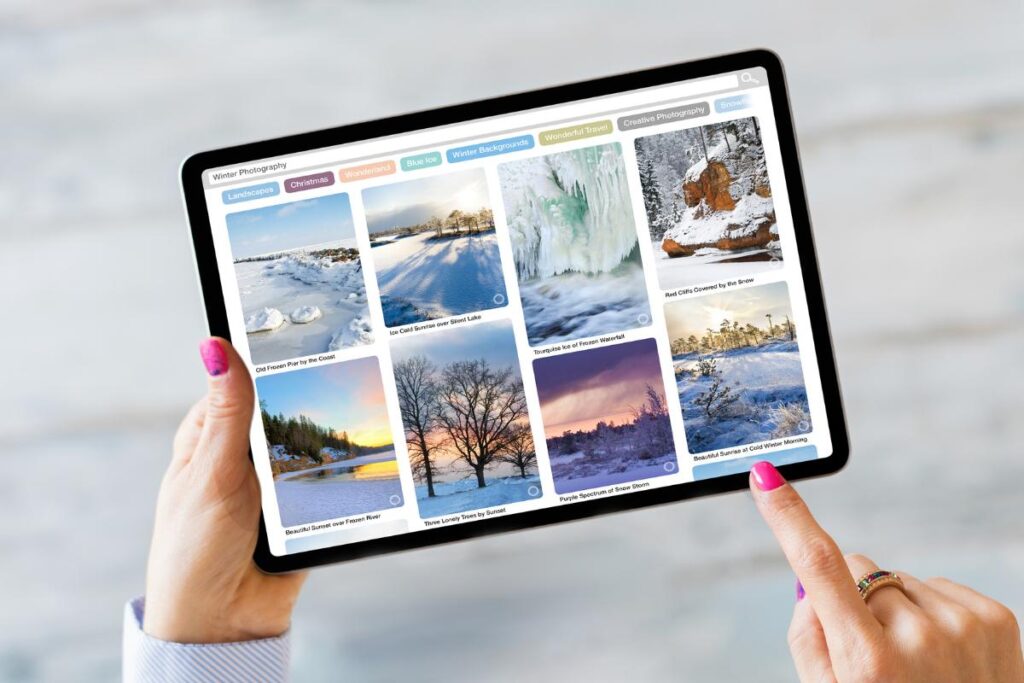
In today’s digital landscape, leveraging Pinterest and Quora for marketing can significantly boost brand visibility, drive traffic, and improve engagement. These platforms are highly effective for content marketing, allowing businesses to establish authority, generate leads, and attract high-quality traffic. Below, we dive deep into actionable strategies for effectively marketing on both platforms. Why Use Pinterest and Quora for Marketing? Pinterest is a powerful visual discovery engine, making it perfect for businesses that rely on compelling images, infographics, and visual storytelling. With over 400 million monthly active users, Pinterest is an excellent tool for driving long-term, organic traffic to websites. Quora, on the other hand, is a question-and-answer platform where users seek expert advice. With over 300 million users per month, Quora offers a great opportunity to position your brand as an authority in your niche by answering relevant questions and linking back to your blog posts. How to Effectively Use Pinterest for Marketing 1. Optimize Your Pinterest Profile Your Pinterest profile is the first thing users see. Make sure it is optimized by: 2. Create Eye-Catching Pins The quality of your Pins determines your success on Pinterest. To maximize engagement: 3. Use SEO-Rich Descriptions Pinterest functions as a search engine, so using keywords in your pin descriptions and board titles can significantly improve visibility. Always: 4. Join and Create Pinterest Boards 5. Leverage Rich Pins Rich Pins pull additional information from your website and enhance your content’s credibility. Enable them to display details like product prices, article descriptions, and recipe ingredients. 6. Schedule Pins for Consistency Use Pinterest scheduling tools like Tailwind to automate pinning and maintain a consistent presence. How to Use Quora for Marketing 1. Optimize Your Quora Profile Before you start answering questions, make sure your profile stands out: 2. Find the Right Questions to Answer Targeting the right questions increases the effectiveness of your marketing efforts. Use these strategies: 3. Write High-Quality, Value-Driven Answers Your answers should be detailed, informative, and engaging. To make them stand out: 4. Add Blog Links Naturally While answering, strategically place links to your blog content to drive traffic. Ensure: 5. Engage with Other Users Best Practices for Using Blog Links on Pinterest & Quora 1. Create Blog-Specific Pins and Quora Answers Each blog post should have custom-designed Pinterest pins and Quora answers tailored to its topic. This ensures a cohesive content marketing strategy. 2. Use a Call-to-Action (CTA) Encourage readers to click your links by using strong CTAs like: 3. Track Performance and Optimize Use Google Analytics and Pinterest Analytics to track which pins and Quora answers are driving traffic. Optimize by: Final Thoughts Using Pinterest and Quora for marketing is a powerful way to boost website traffic, establish authority, and increase engagement. By answering relevant questions with valuable insights and linking to your blog, you can drive highly targeted organic traffic and grow your brand’s online presence effectively.
Influencer Marketing: How Brands Are Leveraging Social Media Stars

Introduction In today’s digital landscape, influencer marketing has emerged as one of the most powerful strategies for brands to connect with their target audiences. With billions of users engaging daily on platforms like Instagram, TikTok, and YouTube, brands are increasingly partnering with social media influencers to drive awareness, engagement, and sales. This article explores how brands leverage social media stars to enhance their marketing strategies, boost ROI, and establish credibility in a crowded marketplace. What is Influencer Marketing? Influencer marketing is a form of social media marketing that involves collaborating with individuals who have a significant online following and strong audience engagement. These influencers, often experts or trendsetters in their niches, help brands reach highly targeted audiences by promoting products or services authentically. Why Brands Are Investing in Influencer Marketing 1. Higher Engagement and Authenticity Unlike traditional advertisements, influencer marketing thrives on authenticity. Consumers trust recommendations from people they follow and admire. According to a recent study, 92% of consumers trust influencers more than traditional advertisements. 2. Access to Niche Audiences Social media influencers cater to specific audiences, allowing brands to tap into niche markets. Whether it’s fitness, beauty, gaming, or technology, influencers provide direct access to engaged followers who are genuinely interested in the promoted products. 3. Improved ROI and Cost-Effectiveness Compared to conventional advertising methods, influencer marketing often delivers a higher return on investment (ROI). A study by Influencer Marketing Hub found that brands earn an average of $5.20 for every $1 spent on influencer marketing. 4. Increased Social Proof and Brand Awareness Consumers are more likely to purchase a product when they see someone they trust using it. By leveraging social proof, influencer marketing helps brands establish credibility and expand their reach organically. Types of Influencers Brands Work With 1. Mega Influencers (1M+ Followers) These are celebrities or high-profile individuals with millions of followers. Brands collaborate with them for large-scale campaigns, though engagement rates may be lower due to their vast audience. 2. Macro Influencers (100K–1M Followers) Macro influencers have substantial reach and high engagement levels. They are often industry experts, vloggers, or popular social media personalities. 3. Micro Influencers (10K–100K Followers) Micro influencers have smaller, more dedicated followings and higher engagement rates. Their recommendations feel more personal and trustworthy, making them ideal for targeted marketing. 4. Nano Influencers (1K–10K Followers) These influencers have a close-knit community of followers and often generate the highest engagement rates. Brands targeting hyper-niche audiences find nano influencers highly effective. Effective Influencer Marketing Strategies for Brands 1. Defining Goals and KPIs Before launching a campaign, brands must establish clear objectives. Common goals include: 2. Choosing the Right Influencer Selecting influencers aligned with a brand’s values and audience is crucial. Key factors to consider include: 3. Crafting Compelling Campaigns Successful influencer campaigns include creative, engaging, and authentic content. Common campaign types include: 4. Leveraging Multiple Platforms Each social media platform caters to different types of content and audiences. Brands should strategically choose platforms based on campaign goals: 5. Tracking Performance and Analytics Measuring the success of an influencer campaign is essential. Brands should track: Tools like Google Analytics, Facebook Insights, and influencer marketing platforms help brands evaluate their campaign effectiveness. Case Studies: Successful Influencer Marketing Campaigns 1. Daniel Wellington’s Influencer Strategy Swedish watch brand Daniel Wellington built its brand almost entirely through influencer marketing. By collaborating with micro influencers on Instagram, they created a viral trend that significantly increased sales and brand recognition. 2. Gymshark’s Growth via Fitness Influencers Gymshark, a leading fitness apparel brand, leveraged fitness influencers and YouTubers to create an engaged fitness community, resulting in millions of dollars in revenue and brand loyalty. 3. Fenty Beauty’s Inclusive Influencer Approach Fenty Beauty, founded by Rihanna, partnered with influencers of various ethnicities and skin tones to promote its inclusive makeup range. The strategy led to massive sales and a strong, diverse customer base. The Future of Influencer Marketing With AI-driven analytics, virtual influencers, and increasing demand for authenticity, influencer marketing is evolving rapidly. Trends to watch include: Conclusion Influencer marketing has transformed the way brands connect with consumers. By partnering with the right influencers, creating engaging content, and leveraging data-driven strategies, businesses can achieve remarkable success. As the digital landscape continues to evolve, staying ahead of trends and optimizing campaigns will be key to sustained growth.
How to Run Google Ads from India for Any Campaign Targeting the USA and Other Countries

In today’s digital era, Google Ads has emerged as a crucial tool for businesses looking to expand their reach beyond borders. Many advertisers in India want to run campaigns targeting audiences in the USA and other countries, but they often face challenges related to account setup, billing, optimization, and compliance with Google’s policies. In this comprehensive guide, we will walk you through the exact steps required to successfully run Google Ads from India for campaigns targeting international markets, ensuring optimal performance and compliance. 1. Setting Up Your Google Ads Account To start running Google Ads targeting the USA, follow these steps: Choosing the Right Google Ads Account Type 2. Configuring Campaign Settings for USA Targeting a. Selecting the Right Campaign Type When running Google Ads from India targeting the USA, it’s crucial to select the appropriate campaign type: b. Setting the Right Geographic Targeting c. Setting the Correct Time Zone 3. Payment and Billing Methods for Google Ads in India One of the major concerns advertisers face is how to pay for Google Ads in India while targeting the USA. Google Ads supports multiple payment methods: a. Prepaid (Manual Payment) b. Postpaid (Automatic Payment) c. Credit Line from Google Pro Tip: To avoid payment issues, use an international debit/credit card or a Google Ads VCC (Virtual Credit Card) from providers like Entropay or Payoneer. 4. Optimizing Google Ads for Better Results in the USA a. Keyword Research for USA Audience b. Ad Copy and Language Preferences c. Ad Extensions for Better CTR 5. Complying with Google Ads Policies To avoid account suspensions or disapprovals, follow these best practices: 6. Using Google Ads VPN for Running Ads in the USA If you want to manage ads as if you were in the USA, consider using a premium VPN: 7. Tracking and Measuring Campaign Performance To improve your Google Ads performance targeting the USA, use these tracking tools: a. Google Analytics Integration b. Conversion Tracking Setup c. A/B Testing for Better Performance Conclusion Running Google Ads from India targeting the USA requires proper setup, payment optimization, ad customization, and compliance. By following the strategies outlined in this guide, you can successfully reach USA audiences, maximize conversions, and scale your business globally.For further insights, continue exploring advanced strategies and take your digital marketing success to the next level!
How to Run Facebook Ads from India for Any Campaign Targeting the USA and Other Countries
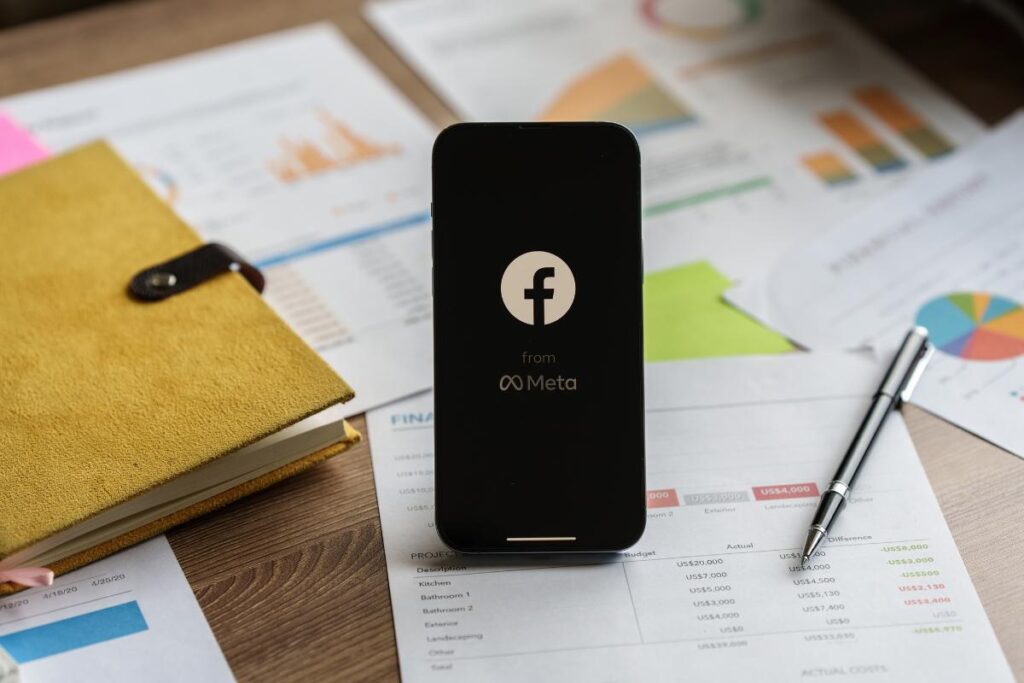
Introduction Running Facebook Ads from India to target the USA and other countries can be a highly effective strategy for businesses looking to expand their reach globally. However, setting up an ad campaign for an international audience requires a well-thought-out strategy to ensure the best return on investment (ROI). In this guide, we will walk you through how to set up and optimize Facebook Ads from India while targeting users in the USA and other foreign markets. 1. Setting Up Your Facebook Business Manager Before launching an ad campaign, you need a Facebook Business Manager account. This tool helps manage multiple ad accounts, pages, and users efficiently. Steps to Set Up Facebook Business Manager: 2. Creating an Ad Account with Correct Billing Details Since you are running ads from India targeting the USA, it is essential to configure the correct currency and payment method. Steps to Configure Billing for International Ads: Pro Tip: Use a credit card that provides international transaction benefits to reduce additional charges. 3. Selecting the Right Campaign Objective Facebook offers multiple campaign objectives based on your business goals. If your target audience is in the USA, you need to choose the objective wisely. Popular Campaign Objectives for USA Targeting: Choosing the right campaign type will directly impact your ad performance and cost-effectiveness. 4. Defining Your Target Audience A well-defined target audience ensures that your ads reach the right people in the USA. Key Targeting Parameters: Pro Tip: Use Facebook Audience Insights to analyze and refine your target audience for improved ad performance. 5. Ad Creative Best Practices for the USA Audience Since cultural preferences differ across countries, you need to tailor your ad creatives accordingly. Tips for Effective Ad Creatives: 6. Setting the Right Budget & Bidding Strategy Budgeting for International Campaigns: Pro Tip: Avoid making frequent budget changes, as it can reset the learning phase of your ads. 7. Choosing the Best Ad Placement Facebook allows ads to be displayed on multiple placements, including Facebook Feed, Instagram, Audience Network, and Messenger. Recommended Ad Placements for USA Campaigns: Using Automatic Placements initially can help Facebook optimize delivery for the best performance. 8. Analyzing & Optimizing Your Ad Campaigns Tracking and optimizing your ad performance is crucial to achieving high ROI. Key Metrics to Monitor: Optimization Strategies: Conclusion Running Facebook Ads from India for targeting the USA requires a deep understanding of audience segmentation, ad creatives, budgeting, and optimization techniques. By following the best practices mentioned in this guide, businesses can maximize their ad performance, lower acquisition costs, and achieve significant results in the international market.For those looking to scale their Facebook Ads strategy, continuous testing and optimization will play a key role in long-term success.
How to Optimize Product Listings for Higher Sales on Amazon USA
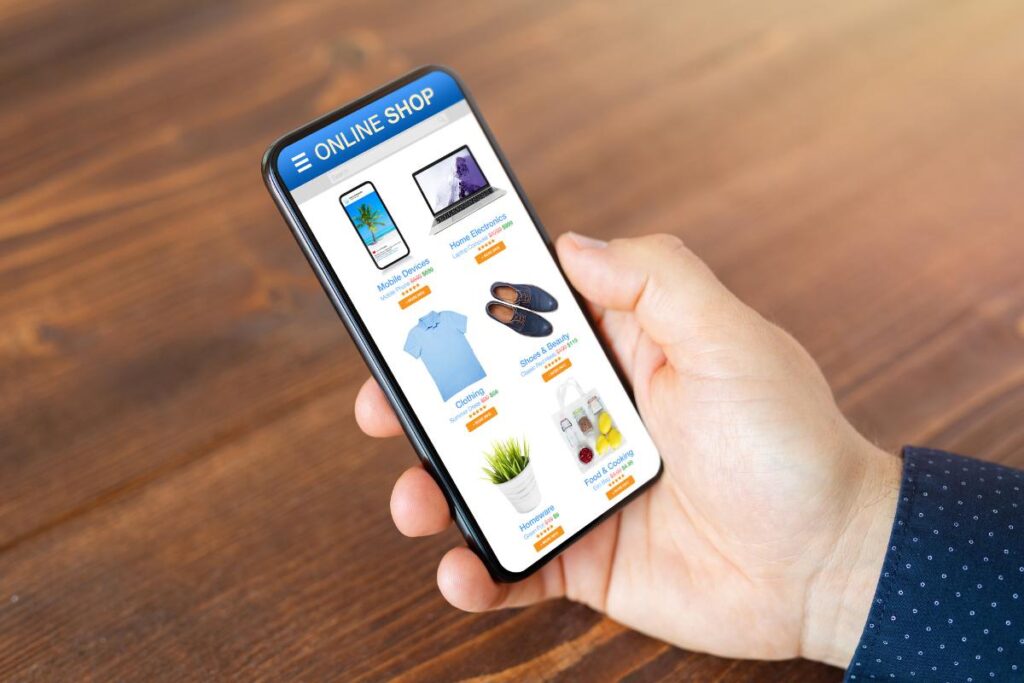
Amazon is the largest eCommerce platform in the world, and competition is fierce. If you want to maximize sales, optimizing your product listings is crucial. A well-optimized listing increases visibility, improves conversion rates, and boosts rankings on Amazon’s search results. Here’s a comprehensive guide to optimizing Amazon product listings for higher sales in the USA market. 1. Conduct In-Depth Keyword Research To ensure your product reaches the right audience, thorough Amazon SEO keyword research is essential. Use tools like Helium 10, Jungle Scout, and MerchantWords to find high-volume, relevant keywords. 2. Optimize Product Titles for Maximum Visibility Amazon’s algorithm heavily weighs product titles, so they must be keyword-rich and compelling. Best Practices for Amazon Product Titles: Example of an Optimized Title: ✅ “Wireless Noise-Canceling Bluetooth Headphones – 40H Playtime, Hi-Fi Stereo, Deep Bass, Over-Ear, Built-in Mic – Black” 3. Craft a High-Converting Product Description Your product description should be persuasive and informative. It must convince potential buyers why your product is the best choice. Key Elements of a Winning Product Description: 4. Optimize Bullet Points for Readability and Conversions Amazon allows up to five bullet points in most categories. This section is crucial for helping customers quickly scan key product benefits. Best Practices for Bullet Points: 5. Use High-Quality Images and Videos Amazon’s guidelines recommend at least six high-resolution images. Images play a huge role in conversions because customers rely on visuals when shopping online. Image Optimization Tips: 6. Leverage A+ Content (Enhanced Brand Content – EBC) If you are a brand-registered seller, take advantage of A+ Content (EBC). This feature allows you to use rich media, enhanced images, comparison charts, and brand storytelling to create visually appealing listings. Benefits of A+ Content: 7. Optimize Back-End Search Terms Amazon provides a back-end search terms field where sellers can insert additional keywords that don’t appear on the front end of the listing. Guidelines for Backend Keywords: 8. Price Competitively to Increase Sales Pricing plays a significant role in both search rankings and conversion rates. Amazon Pricing Strategies: 9. Encourage Positive Reviews and Ratings Amazon’s algorithm favors products with higher ratings and more reviews. Encourage satisfied customers to leave reviews. How to Get More Reviews: 10. Optimize for Amazon PPC (Pay-Per-Click) Advertising If you want to boost product visibility quickly, Amazon PPC advertising is a powerful tool. Amazon PPC Best Practices: 11. Utilize Amazon FBA for Better Conversion Rates Amazon’s Fulfillment by Amazon (FBA) program increases the chances of winning the Buy Box and improves shipping reliability. Benefits of Amazon FBA: Final Thoughts Optimizing your Amazon product listings requires a strategic approach. By implementing keyword-rich titles, high-quality images, A+ content, optimized descriptions, and PPC advertising, you can increase visibility, drive sales, and outrank competitors. Start optimizing your listings today to maximize your success on Amazon USA!
How to Master TikTok Ads for E-Commerce in 2025: A Guide for USA Businesses

TikTok has become an e-commerce powerhouse in recent years, providing businesses with unprecedented access to a highly engaged audience. By 2025, USA businesses leveraging TikTok ads effectively will dominate the online shopping space. With its sophisticated algorithm, interactive ad formats, and viral potential, TikTok offers endless possibilities for brands looking to maximize their ROI. This guide will help you master TikTok advertising strategies to ensure your e-commerce business thrives in 2025. Why TikTok Ads Are Crucial for E-Commerce Growth in 2025 TikTok is not just a social media app anymore—it has evolved into a full-fledged e-commerce marketplace. With more than 150 million active users in the USA alone, businesses cannot afford to ignore this platform. TikTok’s unique features, such as TikTok Shop, in-app purchases, and live shopping events, make it the perfect environment for brands to drive conversions. Key Benefits of TikTok Ads for E-Commerce: Best TikTok Ad Strategies for E-Commerce in 2025 1. Utilize TikTok’s Advanced Ad Formats TikTok continuously updates its advertising options, providing businesses with new ways to capture audience attention. Understanding these formats will be crucial for success in 2025. 2. Leverage Authentic and Trend-Based Content TikTok thrives on authenticity and trends. Creating content that feels native to the platform is key. 3. Master TikTok’s Algorithm to Boost Ad Performance To maximize ad effectiveness, businesses must align with TikTok’s algorithm. 4. Optimize Audience Targeting for Maximum ROI TikTok Ads Manager provides precise targeting options, making it easier to reach your ideal audience. 5. Tap Into TikTok Shop and Live Shopping Trends By 2025, TikTok will be an e-commerce-first platform. Integrating TikTok Shop and live shopping into your ad strategy is a must. 6. Track Key Metrics and Optimize Campaigns TikTok’s analytics tools provide valuable insights into campaign performance. To stay ahead in 2025, data-driven decision-making is crucial. Emerging TikTok E-Commerce Trends to Watch in 2025 1. AI-Powered Ad Creation TikTok is likely to introduce AI-driven tools to help businesses create high-performing ads efficiently. 2. Augmented Reality (AR) Shopping Brands can expect AR shopping experiences where users can try on products virtually before purchasing. 3. Social Commerce & Community Building Businesses will need to focus on building communities, not just selling products. 4. Sustainability & Ethical Marketing Eco-conscious consumers will prefer brands that promote sustainability and ethical business practices. Final Thoughts Mastering TikTok ads for e-commerce in 2025 requires a combination of creativity, data-driven decisions, and trend awareness. With the right strategies, audience targeting, and content creation, businesses can drive massive sales and build a loyal customer base.Start implementing these strategies today and position your brand for unmatched success in the world of TikTok e-commerce.
Google Ads Retargeting Strategies for Maximum Conversions

Introduction In the competitive landscape of digital marketing, Google Ads retargeting has emerged as a powerful strategy to boost conversions, increase brand awareness, and re-engage potential customers who have previously interacted with your website. By leveraging Google’s robust retargeting tools, businesses can strategically position their ads in front of high-intent users, ensuring a higher probability of conversion. What is Google Ads Retargeting? Google Ads retargeting (also known as remarketing) is a digital marketing strategy that enables advertisers to re-engage users who have visited their website but didn’t complete a desired action (such as making a purchase, signing up, or downloading an eBook). By using cookies and tracking pixels, businesses can display targeted ads to these users across Google’s Display Network (GDN), YouTube, Gmail, and even search results. Why is Google Ads Retargeting Crucial for Digital Marketing Success? Top Google Ads Retargeting Strategies for Maximum Conversions 1. Segment Your Audience for Precision Targeting Not all visitors have the same intent. By segmenting your audience, you can create custom retargeting lists based on their behavior and interaction levels. Some effective segmentation methods include: 2. Utilize Dynamic Retargeting for Personalized Ads Dynamic retargeting is a more advanced technique that enables businesses to show highly personalized ads based on past interactions. This is particularly effective for eCommerce stores. 3. Set Up Google Ads Remarketing Lists for Search Ads (RLSA) Remarketing Lists for Search Ads (RLSA) allows businesses to customize search ad campaigns for users who have previously visited their website. 4. Leverage YouTube & Gmail Retargeting for Maximum Exposure Expanding your retargeting efforts beyond traditional search and display networks can help reinforce brand awareness. 5. Implement Frequency Capping to Avoid Ad Fatigue One of the biggest mistakes in Google Ads retargeting is overwhelming users with excessive ads. To prevent ad fatigue and banner blindness, use frequency capping to limit the number of times your ads appear to the same user within a specified period. 6. Exclude Converted Users to Optimize Ad Spend Avoid wasting budget by ensuring converted users do not keep seeing the same retargeting ads. 7. Use Compelling Ad Copy and Strong CTAs Your retargeting ads need to stand out. Use persuasive ad copy with strong calls-to-action (CTAs) that entice users to return and convert. 8. Optimize Landing Pages for Retargeted Traffic A retargeting campaign is only as effective as the landing page experience it leads to. Ensure that: 9. A/B Test Different Retargeting Ad Variations Regularly testing different ad creatives, messaging, and formats can significantly improve retargeting performance. Test: 10. Monitor Performance & Continuously Optimize Finally, continuously analyze and adjust your Google Ads retargeting campaigns to maximize conversions. Conclusion Google Ads retargeting is an essential strategy for maximizing conversions and improving return on investment (ROI). By implementing segmented audience targeting, dynamic retargeting, RLSA, and cross-channel remarketing, businesses can effectively re-engage potential customers and drive more sales. To achieve optimal results, it’s crucial to continually test, optimize, and refine your campaigns.
Drive High-Traffic from the USA – More US Visitors = More Earnings!

In the digital world, website traffic is the lifeblood of online success. If you are looking to increase website traffic from the USA, you are on the right track to maximizing your earnings. The United States boasts a massive online audience with high purchasing power, making it an ideal target for businesses, bloggers, and content creators. In this guide, we will explore proven strategies to drive high-quality US traffic to your website and convert visitors into revenue. Why US Traffic Matters for Your Website? The United States is home to one of the largest and most engaged online audiences in the world. Here’s why focusing on US visitors can significantly boost your earnings: Proven Strategies to Drive High-Traffic from the USA 1. Optimize for US-Based SEO Keywords To rank higher on Google and attract US visitors, you need to optimize your website for US-focused keywords. Here’s how: 2. Create US-Centric Content Your content must resonate with American audiences to keep them engaged. Some effective content strategies include: 3. Leverage Social Media for US Traffic Social media is a goldmine for driving high-quality traffic from the USA. Here’s how you can use different platforms effectively: 4. Run Geo-Targeted Paid Ads Paid advertising is one of the fastest ways to attract US visitors. Here’s what works best: 5. Build US-Based Backlinks Backlinks from US-based websites improve your domain authority and search rankings. Here’s how to get them: 6. Optimize for Mobile and Voice Search With more Americans using mobile devices and voice assistants, optimizing for these platforms is crucial: 7. Target US-Based Email Subscribers Email marketing remains one of the most powerful tools for driving repeat traffic from the USA. Best practices include: 8. Use Local SEO to Attract US Audiences If your website serves a specific location in the USA, local SEO is a game-changer. Optimize by: Conclusion: More US Traffic = More Earnings! Driving high-quality traffic from the USA is the key to maximizing your website’s earnings. By implementing these strategies, you can attract engaged American visitors, boost conversions, and generate more revenue from advertising, affiliate marketing, and sales.
